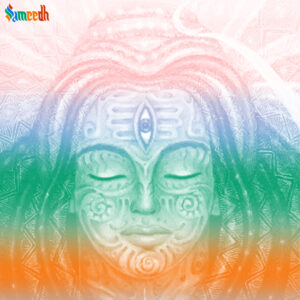Soma holds significance in ancient Vedic literature and Hindu mythology as a sacred and symbolic substance. There are different interpretations and understandings of Soma, but it is commonly associated with a divine elixir, plant, or ritual drink. The connection between Soma and Lord Shiv is multifaceted and has spiritual, symbolic, and mythological dimensions.
Soma refers to a nectar often associated with the Moon, and it holds significant symbolic importance in Vedic and Puranic traditions. Here are some aspects of Lord Shiva’s connection with Soma:
- Soma as a Divine Elixir:
- In Vedic literature, Soma is often described as a divine nectar or elixir with rejuvenating and spiritual qualities. It is considered the elixir of immortality, conferring bliss and divine consciousness to those who consume it.
- Symbolism of Soma:
- Soma is not only a physical substance but also a symbolic representation of the divine. It symbolizes the transcendental, blissful, and life-giving aspects of the divine consciousness.
- Soma in Vedic Rituals:
- Vedic rituals often involved the preparation and consumption of a ceremonial drink called Soma during sacrificial ceremonies (Yajnas). The Soma ritual was central to Vedic worship, and it was believed to facilitate communion with the divine and enhance the power of the rituals.
- Shiv’s Role as the Ascetic Yogi:
- Lord Shiv is often depicted as an ascetic yogi deeply engaged in meditation and contemplation. The symbolic association with Soma in the context of Shiva may represent his pursuit of heightened states of consciousness and spiritual enlightenment through ascetic practices.
- Chandra (Moon) and Soma Connection:
- The Moon (Chandra) is closely associated with Soma in Hindu mythology. The waxing and waning phases of the Moon are considered symbolic of the cyclical nature of Soma. Lord Shiva’s connection with the Moon, as depicted by the crescent moon on his forehead, signifies his association with Soma and the divine energy it represents.
- Cosmic Dance (Tandava) and Soma:
- Shiva’s cosmic dance, known as Tandava, is often associated with the concept of Soma. The dance symbolizes the dynamic and creative forces in the universe, and Soma represents the divine inspiration that fuels this cosmic dance.
- Inner Spiritual Awakening:
- The connection between Shiva and Soma may also symbolize the inner spiritual awakening and the quest for transcendental knowledge. Shiva’s role as the supreme yogi and the embodiment of divine consciousness aligns with the spiritual aspects associated with Soma.
In summary, the connection between Soma and Lord Shiva is deeply rooted in symbolism, mythology, and spirituality. Soma represents the divine elixir of immortality and spiritual enlightenment, and its association with Shiva underscores his role as a yogi and the embodiment of divine consciousness in Hindu cosmology.

